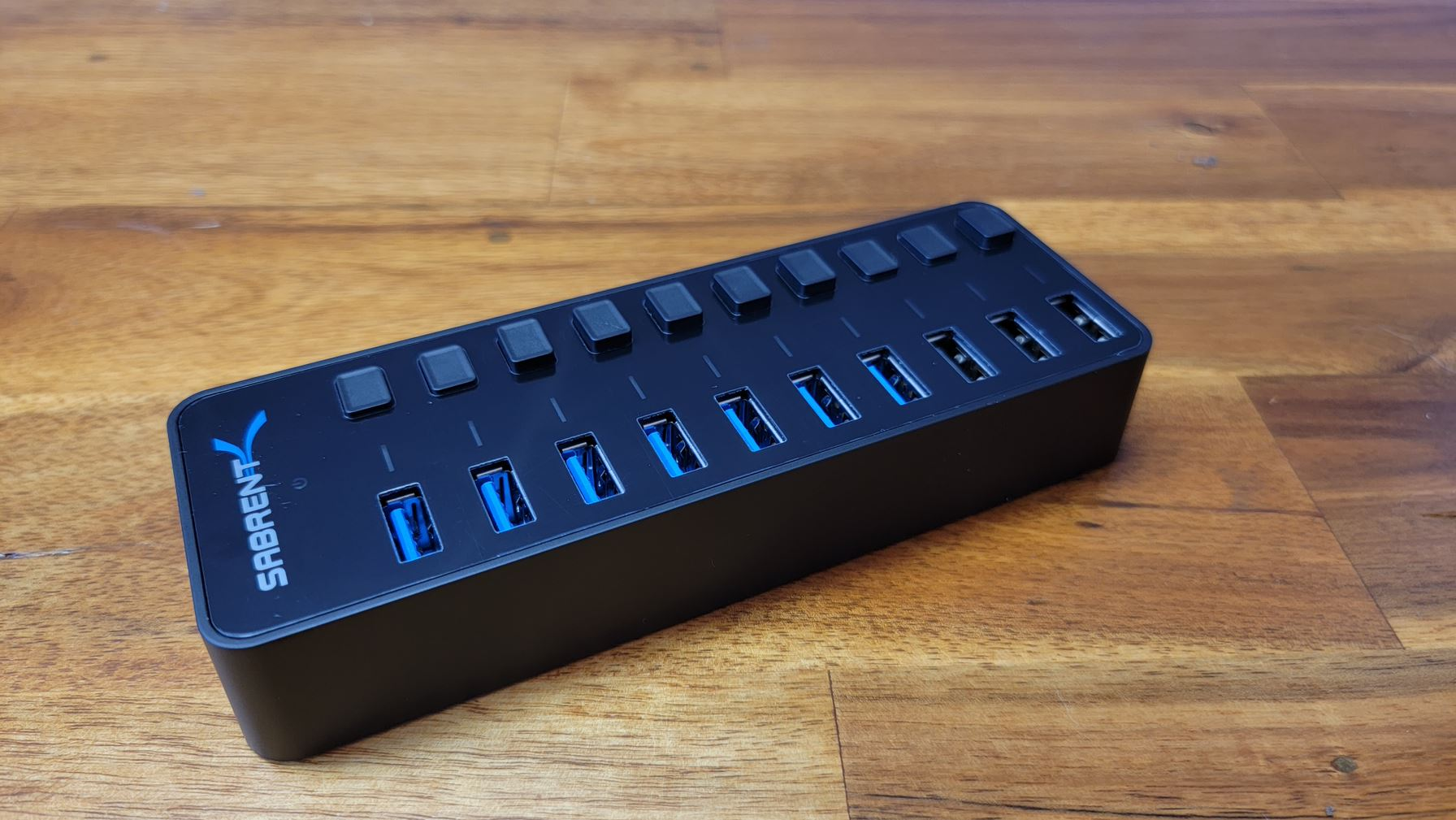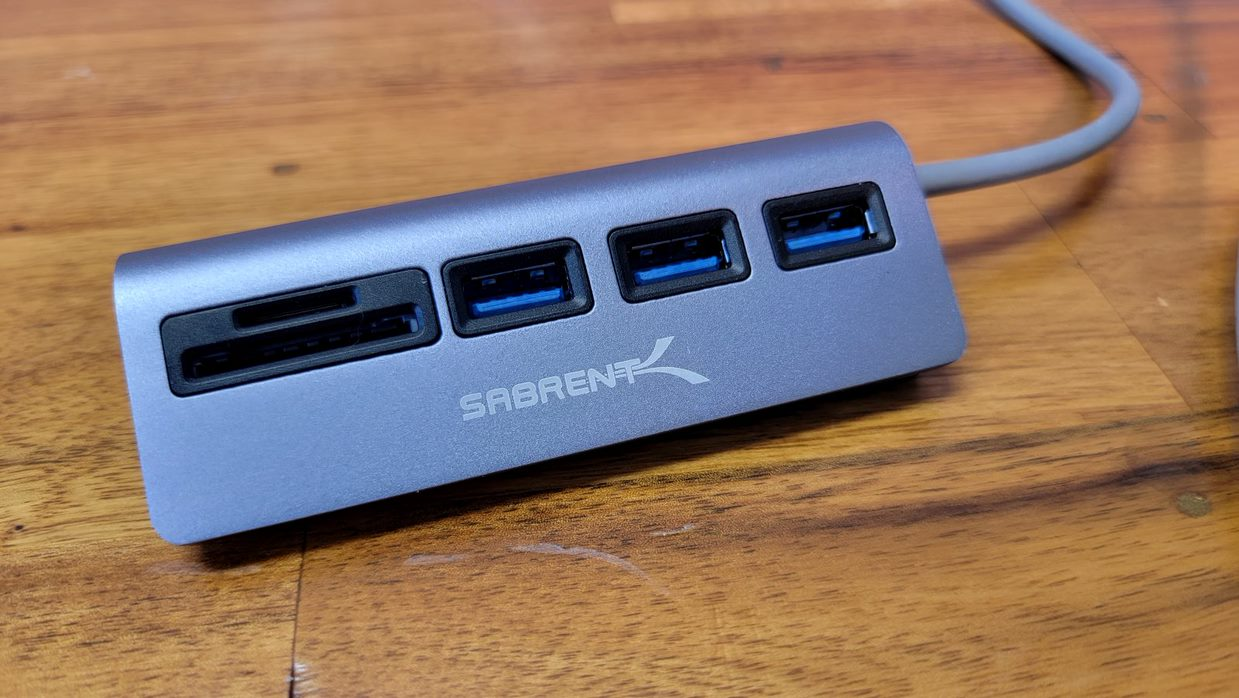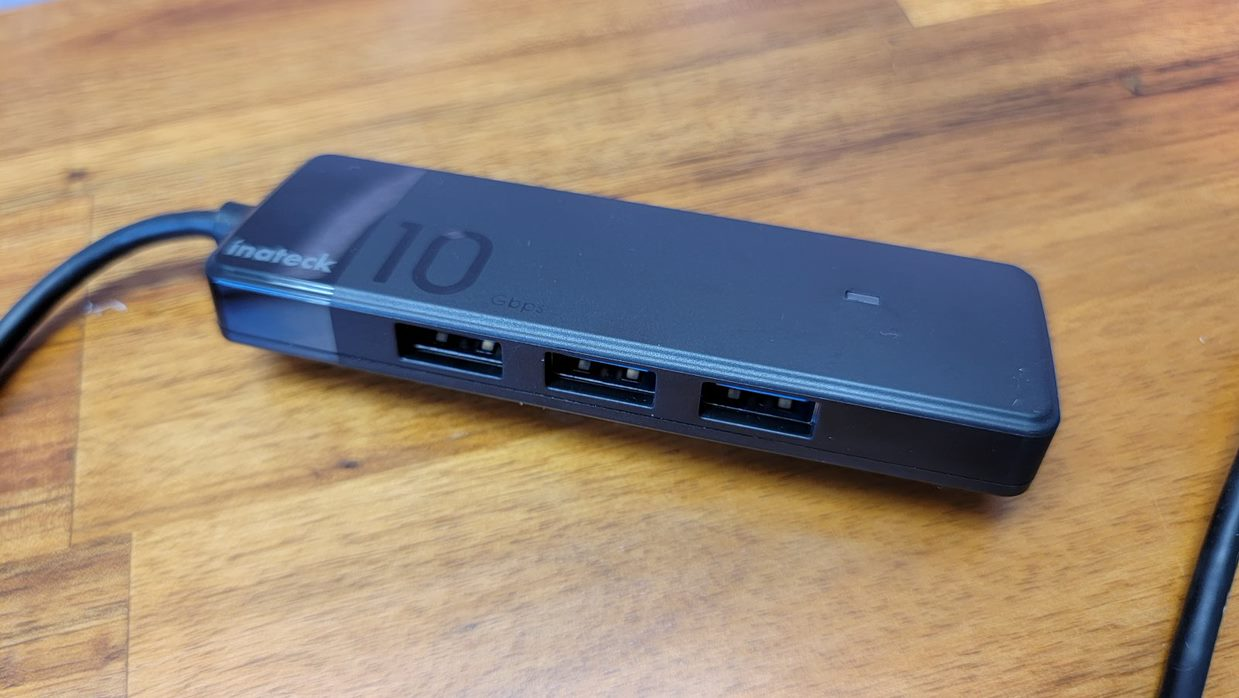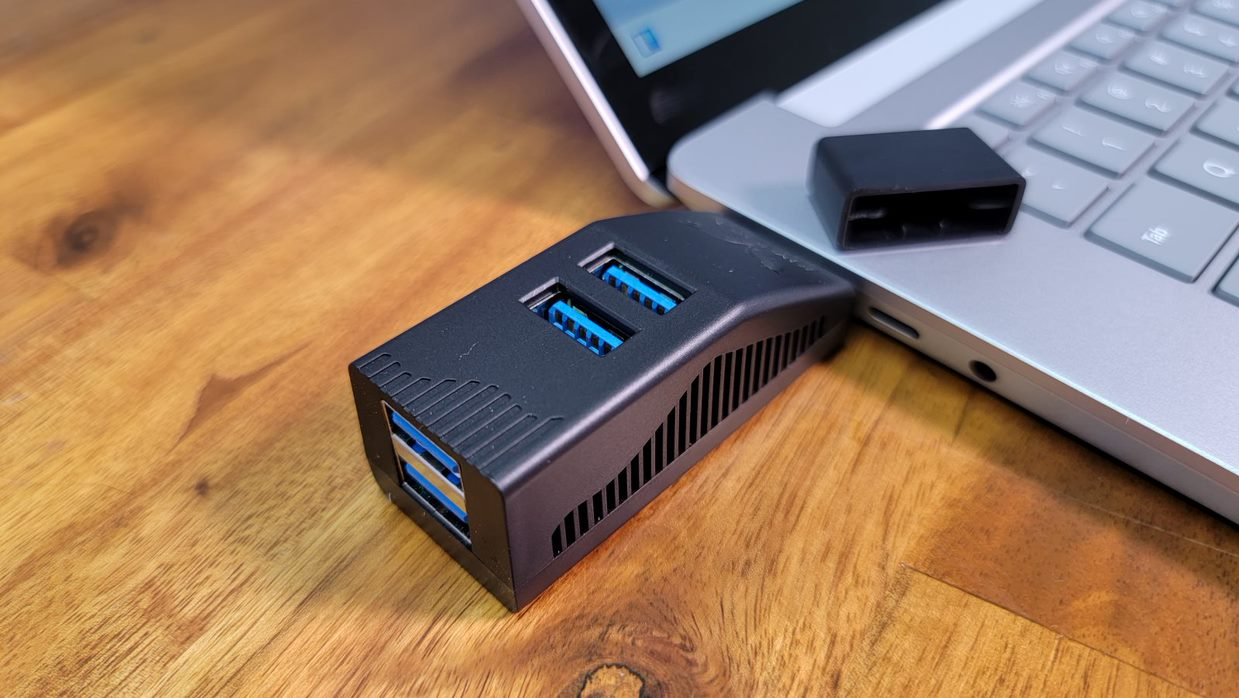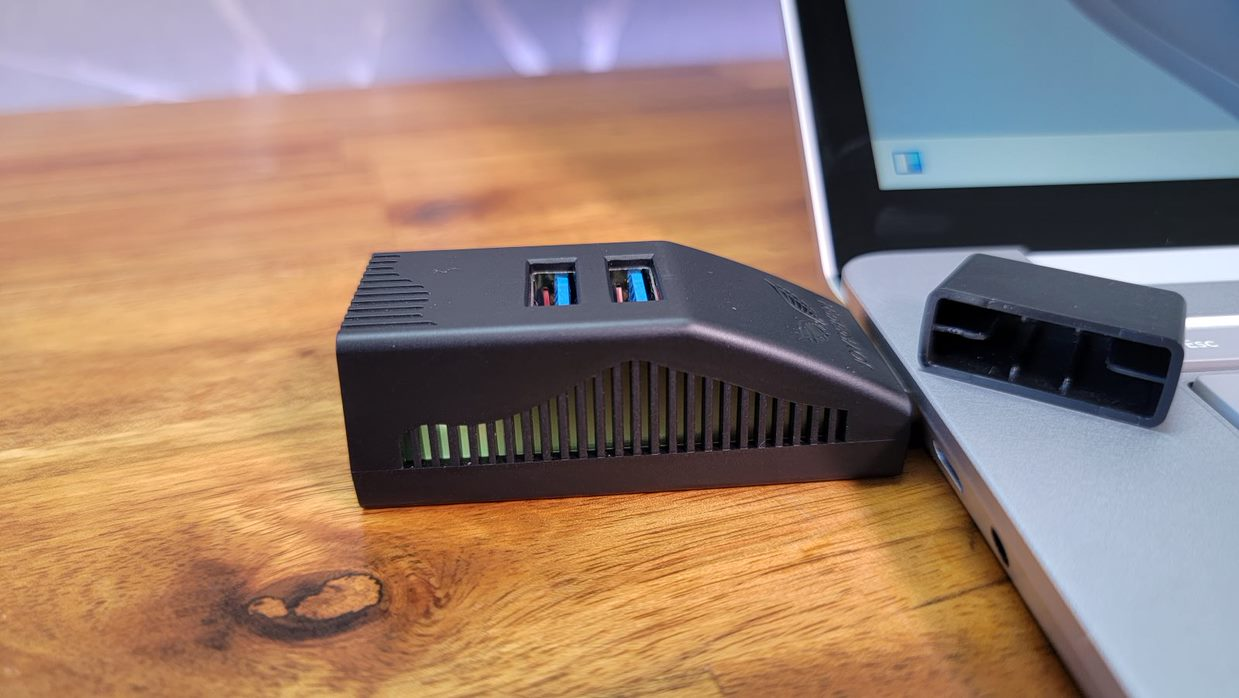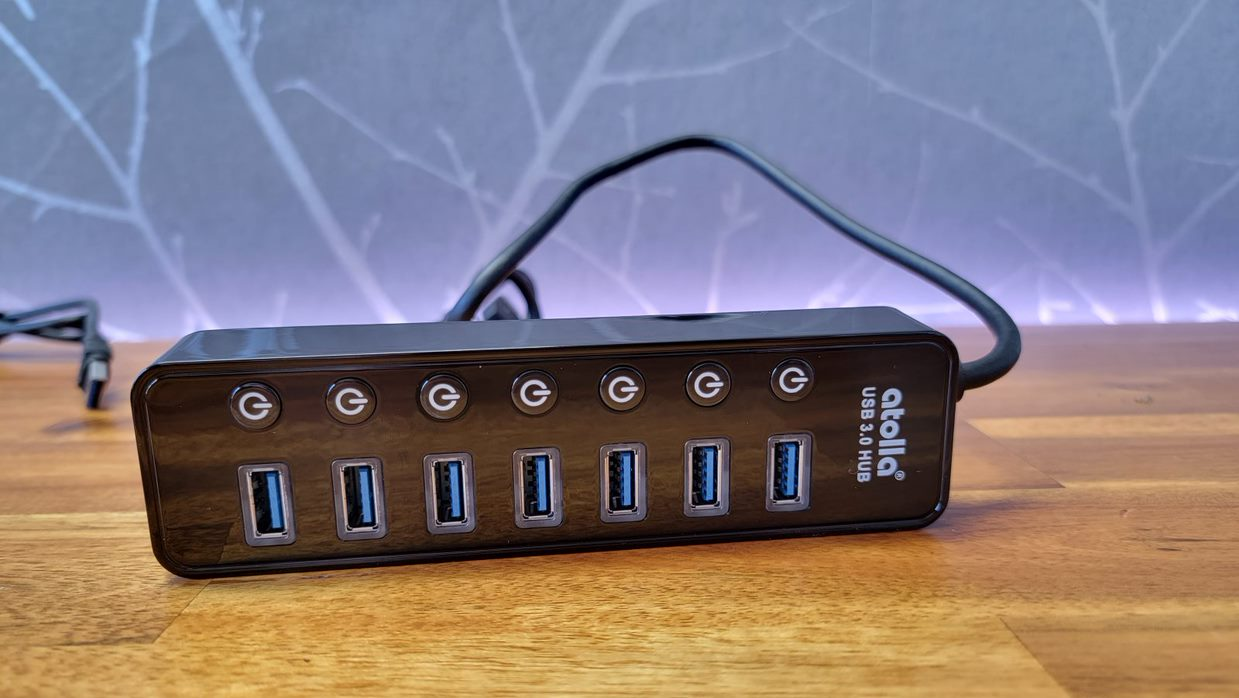Best USB Hubs: Powered, Portable and Type-C
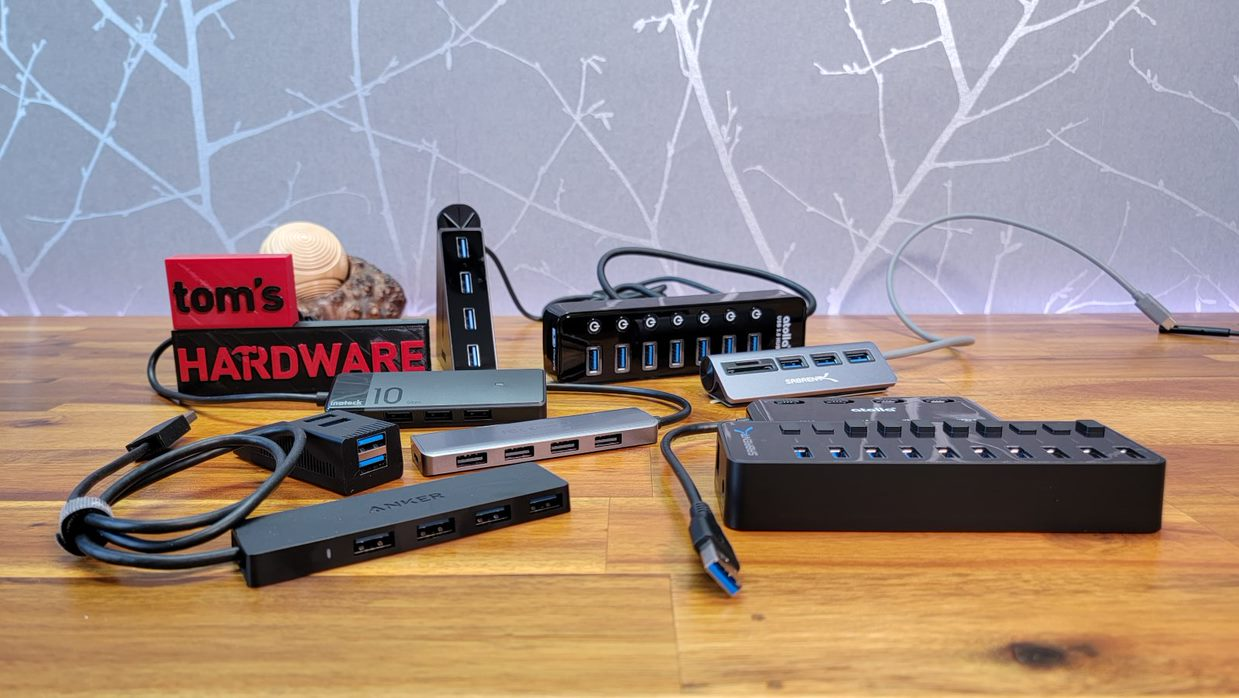
Every PC owner needs at least one USB hub to add ports, put connections within easy reach, or supply more power for charging / operation than your computer delivers on its own. One glance at the USB hub listings on Amazon will tell you that the market is full of choices, from tiny portable hubs that you can stash in a small pocket of your bag to large, powered hubs you'll want to keep on your desk.
Though there are plenty of choices, not all of them rank as the best USB hubs, and not all will meet your needs. To help you choose, we've tested more than dozens of models with different capabilities and listed the very best USB hubs on this page. We've also got some tips for picking the right type of USB hub, which you'll find below our product picks.
To find the best USB hub for your needs, consider the following:
✅ Upstream connection (Type-A or Type-C?)
USB hubs have multiple downstream ports to connect to your devices but only one upstream connector, which could be a port but is often a built-in wire that connects to your computer. Many laptops, including a lot of the best Ultrabooks, only have USB-C ports, so your hub's upstream connector would have to be Type-C.
✅ Output ports
Make sure you get enough ports to attach the number of devices you’re likely to need. Most USB hubs have at least 3, more often 4, output ports, but at your desk, you may need a lot more than that. Also, consider whether you are attaching any USB-C devices (most output ports on hubs are Type-A).
✅ Speed
Most USB hubs operate at standard USB 3.0 (aka USB 3.2 Gen 1) speeds of 5 Gbps. However, a few can deliver 10 Gbps. There are also some cheapies that are limited to USB 2; avoid those at all costs.
✅ Powered or not?
Some USB hubs come with their own AC adapters so that they can provide more power than your computer delivers from one of its ports. Bus power from your computer can be pretty low, not enough to juice several power-hungry peripherals at once or to charge devices at a reasonable rate. By definition, a USB hub that needs its own plug isn’t very portable.
✅ Any extra connectivity?
Some USB-C hubs will come with HDMI out, allowing you to connect to a monitor, provided that your PC can output video from its Type-C port. Other hubs have microSD or SD card readers built-in.
Best USB Hubs You Can Buy Today
Why you can trust Tom's Hardware
Best Desktop USB Hub
1. Sabrent HB-B7C3, 10-port USB 3.0 Hub
Our expert review:
Specifications
Reasons to buy
Reasons to avoid
Getting a desktop USB hub like the Sabrent HB-B7C3 will change your tech life, both because of the amount of ports it has and because you can turn each one on and off. Sabrent's powered hub has a whopping ten USB Type-A ports, seven of which can do data transfer with the remaining three serving as changing ports only, capable of delivering more wattage to juice your phone, headset or tablet.
Each USB port has its own dedicated power button and, unlike with some competitors we tested, Sabrent's port buttons depress quickly, and have solid mechanical switches that make a pleasant clicky noise and stay in the up or down position. There's also a cool-looking blue status light to let you know whether a port is on or off.
I have been using the Sabrent HB-BUP7, the nearly-identical 7-port sibling to the HB-B7C3, as my daily driver for more than a year, and having these buttons is a real game changer. Changing default audio devices in Windows is a royal pain, requiring one to go into the control panel to, for example, make sound come out of your headset instead of your speakers. But with the power switches, I just turn off my USB speaker and turn on the wireless headphone dongle, or vice versa.
Anyone who works with microcontrollers such as the Raspberry Pi Pico or any Arduino board knows that most of these devices don't have on / off switches or even reset buttons. So, if you change code and need to restart them or you just want to power them off, you often need to yank the plug in and out, a huge hassle that could damage your gear. But with the Sabrent HB-B7C3, you can just toggle power on whatever port your microcontroller is plugged into.
The build quality on Sabrent's 10-port USB hub is the best we've seen on any hub we've tested. The clean lines, compact shape and tasteful lights and buttons make this look like a truly premium product. Having seven different data ports means that you can have all of your peripherals plugged in – your mouse, keyboard, webcam, microphone, 2FA key, speakers and headphones – and still have a port or two to spare.
The hub is powered by a massive 60-watt power adapter that looks like a laptop brick (we wish it were smaller). Sabrent boasts that the 3 charging ports deliver 2.4 amps of power while the data ports max out at 0.9 amps. As we found out when we we plugged our power load tester into the ports, both the charging and data ports are capable of delivering as much as 3.8 or 4.9 amps but only if you drop the voltage down to 4.05 volts (on all USB chargers, the volts go down if you request too many amps).
At 4.8 volts, which is around the minimum voltage most USB devices will tolerate, we got 1.25 and 1.32 amps from the charging and data ports, respectively. When I plugged my Android phone in to charge, a real-world situation because a device will negotiate the best combination of volts and amps, the charging ports sent 4.78 volts at 1.35 amps while the data ports gave the same amount of volts, but just 0.35 amps. To make a long story short, you'll get 6.4 watts from the charging ports, which is decent but not the 15-watts that fast phone chargers provide. All three charging ports should be able to deliver this at once.
All of the HB-B7C3's data ports operate at 5 Gbps and, in our tests, there was no drop off in speed from transferring data from our external SSD through the hub (versus directly connected to the PC). The 2-foot detachable upstream cable is helpful but we need an extension cable to reach all the way to the back of our desktop PC.
At $44 at press time, the Sabrent HB-B7C3 doesn't come cheap, but it's definitely worth the price. If you don't need the charging ports, you can save a little cash and desk space with the 7-port, Sabrent HB-BUP7 ($38 at press time), which also has a smaller power adapter. You can also splurge for the Sabrent HB-BU10 ($60 at press time), which has 10 data ports and no charging ports.
Best Premium USB Hub for MacBooks and Ultrabooks
2. Anker PowerExpand 4-in-1 USB-C Hub (with built-in SSD)
Our expert review:
Specifications
Reasons to buy
Reasons to avoid
All MacBooks and many of the best Ultrabooks come with only USB-C ports, and just a couple of them. That’s why there are so many portable USB hubs that connect to a computer via a built-in USB-C cable and then provide a few Type-A ports, along with some extra goodies such as an HDMI out or a card reader. Anker’s PowerExpand 4-in-1 USB-C hub has one whiz-bang feature we haven’t seen anywhere else, and that’s a built-in 256GB SSD.
The built-in SSD makes this hub double as a backup drive, which could be really handy if you need to copy files on the go or if your laptop doesn’t have a ton of internal storage. On our tests, the SSD was really quick, copying a 25GB file at 357.4 MBps read and 261.4 MBps write speeds. Those numbers were nearly identical to the 357 / 277.2 MBps we got from our external SSD (when run through this hub).
In addition to the SSD, the Anker PowerExpand has an HDMI out port and two USB 3.x Type-A ports that operate at 5 Gbps. There’s a USB-C power pass-through you can plug your laptop’s power adapter – up to a 100-watt unit – so that you can charge your computer while using this hub (the USB-C port does not work for data transfer; we tried).
The Anker’s rounded, gray plastic design looks premium enough and its built-in, upstream USB-C cable tucks into its side for added portability. However, at just 6 inches, this is a very short cord. If you need a longer cord, you require more ports, or you don’t want to pay a high price (currently $99) for your USB hub, look elsewhere. But if you can afford it, the PowerExpand’s built-in SSD is quite a perk.
Best USB Hub for iPads
3. Anker 541 USB-C Hub for iPads
Our expert review:
Specifications
Reasons to buy
Reasons to avoid
If you have a recent-gen iPad with a USB-C connector, you may find yourself wishing you could connect a USB Type-A device, headphones or even an external display. Anker’s 541 USB-C Hub for iPads has you covered with a unique design that’s meant to snap right into the side of your tablet or even a USB-C laptop. There’s no wire as the USB-C plug and a slight, protruding chin hold the entire metal hub in place.
The Anker 541 has a lot of outputs, but only one of them is a USB 3.x Type-A port that operates at 5 Gbps. So, if you were planning to plug in multiple USB devices, you’re out of luck. However, the hub has HDMI out, a micro SD / SD card reader, a 3.5mm audio jack and a USB-C power passthrough for charging your device. That’s a lot of functionality in a compact package.
While the USB-C port on iPads only operates at USB 2.0 speeds (480 Mbps), the Anker 541 can do the full 5 Gbps of USB 3, which makes it a solid choice for MacBooks and lightweight PC laptops that have USB-C. In our tests connecting an external SSD, the USB Type-A port on the hub operated at the same speed as a Type-A port on our test PC.
Best USB Hub for iPads
4. Anker 4-Port Ultra Slim USB 3.0 Hub
Our expert review:
Specifications
Reasons to buy
Reasons to avoid
Sometimes you just need a few extra USB Type-A ports on your laptop or desktop and you don’t want something that takes up a lot of space in your bag or on your table. At just 0.39 inches thick and 3.68 inches long, Anker’s 4-port Ultra Slim is very discrete. The hub has a built-in, 2-foot cable that’s long enough for any portable use, though you may want to use the attached hook and loop cable tie to keep it from getting tangled.
The Anker 4-Port Ultra Slim, as its name suggests, has four USB 3.x Type-A outputs and a single built-in Type-A upstream cable. As with every other hub on this list, we tested the Ultra Slim and found that it did not have any effect on transfer rates, providing our external SSD the same read and write speeds it got when connected directly to our laptop.
Though it has a very reasonable price ($12.99 at press time), Anker’s hub seems to have very solid build quality compared to some competitors, with a hard matte black plastic shell that shows no obvious seams and an attractive blue power light, though the casing got a little scratched as we carried it around. The Anker hub’s premium design stands in stark contrast to another cheap hub we tested, the Atolla USB 3.0 Hub Splitter, which has a glossy plastic shell with a line down the middle where two pieces of plastic were clearly glued or snapped together (and I fear could come apart some day).
Best USB-C Hub, Best Affordable USB Hub for MacBooks
5. Sabrent HB-U3CR
Our expert review:
Specifications
Reasons to buy
Reasons to avoid
Sabrent's HB-U3CR looks like it was built for MacBooks, thanks to a gunmetal gray aluminum chassis and a stylish, slanted design that will prop it up at an insertion-friendly angle on any table. However, it's an equally strong choice for use with a PC laptop that has USB-C ports and needs a few USB Type-A connections.
The HB-U3CR's small size and built-in cable make it easy to throw into your laptop bag, but a magnetic sticker that comes with it allows you to set up a permanent spot on your desk where you can attach and detach it, without fear of it falling over when you tug on the wire. It has three USB Type-A 3.x (5 Gbps) ports and a card reader that supports both microSD and SD cards, a boon for folks who are either using a digital camera or working with Raspberry Pis (which use microSD cards as their boot drives).
On our tests, the Sabrent HUB-U3 did not introduce any lag into file transfers, which means it won't hurt your performance. However, like most USB hubs on the market, it is limited to 5 Gbps, so that’s the top speed even if you connect it to a thunderbolt port and 10 Gbps USB peripheral. The 2-foot, built-in USB cord is about standard for a portable hub, but could be too short if you plan to use it with a desktop PC that you keep on the floor or far from your peripherals.
Best 10 Gbps, Type-A USB Hub
6. Inatek HB2025AL10 Gbps Hub
Our expert review:
Specifications
Reasons to buy
Reasons to avoid
If you're using an external storage device – perhaps an NVMe drive you've put in one of the best SSD enclosures – you’d benefit a great deal from using a hub that supports 10 Gbps connections – alternatively known as USB 3.1 Gen 2 or USB 3.2 Gen 2. Unfortunately, very few USB hubs actually support these higher speeds and even fewer still support the 10 Gbps speed when it comes from a Type-A, rather than a Type-C, port.
The Inatek HB2025AL gives you four USB Type-A 10 Gbps output ports and one upstream Type-A 10 Gbps connector that's on a built-in cable. Considering that few laptops have USB Type-A ports that support 10 Gbps and few desktops have 10 Gbps Type-A ports on the front panel, you're probably going to be plugging this into the back of your motherboard. The model we tested was actually the HB2025A, which has a 1.6-foot cable, but we're recommending you spend an extra dollar or two to get the HB2025AL which has a 3.3-foot cable instead. Even 3.3 feet could be short if you're working with a desktop that’s on the floor.
You can also get other versions of Inatek's USB hub, the HB2025 for example, that connect to your computer via USB-C, which is a more common interface for 10 Gbps connections, particularly on laptops. We really wish one of these hubs had a mix of USB-C and USB Type-A downstream ports, but they are all Type-A downstream.
No matter what version of Inatek's hub you choose, the 10 Gbps connection is very welcome if you're working with external drives. Our test laptop did not have a USB Type-A 10 Gbps port so we connected the hub to a port on the back of our desktop and got read-and-write transfer rates of 684.7 and 492 MBps on our DiskBench 25GB test. By way of comparison, we got rates of 358.1 and 274.8 MBps when connected to a standard 5 Gbps port on our laptop, so the 10 Gbps speed makes quite a bit of difference.
Best Tiny USB Hub
7. JoyReken 4-Port Mini USB 3.0 Hub
Our expert review:
Specifications
Reasons to buy
Reasons to avoid
Several portable USB hubs could fit in your pants pocket or your bag, but here’s one that’s so small that it can fit in the your shirt pocket or the front pocket on your Members Only jacket and nobody would even notice it. JoyReken’s 4-Port Mini USB 3.0 hub is a hub-on-a-stick that plugs directly into a Type-A port and provides you with four USB 3.0 Type-A connections, along with a cute RGB light show that cycles through a series of colors (you can’t control the patterns or turn them off).
We can’t decide whether the idea of turning a USB hub into a stick which has a male connector instead of a cable is a great idea in the long term. In the short term, it’s very convenient to have something this small that turns one USB 3.0 port into four, and performance was solid – identical to connecting directly to the laptop’s USB Type-A port in our tests. However we worry about what happens when you accidentally exert too much force when plugging a device into the JoyReken hub when it’s dangling off of the edge of your laptop; could it snap? We didn’t press hard enough on our review unit to find out.
Best Cheap Power-Switching USB Hub
8. Atolla 7-Port USB Data Hub Splitter
Our expert review:
Specifications
Reasons to buy
Reasons to avoid
This is a budget-friendly alternative to Sabrent’s HB series of USB hubs as it has 7 USB 3.0 data ports you can turn on and off, along with one dedicated charging port, and costs a lot less ($21 at press time). However, Atolla definitely cut some corners to get it to this price.
The chassis looks kind of ugly with a cheap-looking shiny plastic that’s a fingerprint magnet. The power toggle buttons for each port are soft and require you to hold them down for a second or two to change their state, which is a step down from the clicky buttons on Sabrent’s hubs. Also, the USB cable is built-in, so you can’t replace it with a longer one.
Similar to the Sabrent HB-U3CR, the Atolla delivered 1.2 amps at 4.8 volts on our power test and it charged our phone at 4.78 volts and 1.35 watts. The Atolla hub also offered similar performance to other hubs; we detected no slowdowns when copying files with our test SSD.
How We Test USB Hubs
When it comes to USB hubs, most of the time, the specs don’t lie. If you see a hub that has USB 3.x (USB 3.0 or USB 3.2 Gen 1) ports, those ports should operate at the same exact speed as connecting a device directly to a USB 3 port on your computer. To find out if any of the hubs we tested created a data bottleneck, we hooked up a 10 Gbps external SSD to the hub, which we connected to a laptop. We then used DiskBench to copy a 25GB folder both to and from the disk and compared the numbers to those we got when connecting the disk directly to the laptop.
In all cases but one, there was no change in performance from using a hub. Using the 5 Gbps interface on most USB hubs and on our laptop, we got read transfer rates of 355 to 360 MBps and write transfer rates of 273 to 285 MBps. The exact numbers could vary from one run to the next so there is no point in listing the results from each hub — they are all within the margin of error of each other. Only one hub, the Sabrent HB-UMP3, showed a slowdown in its write speed, dropping down to 179.5 MBps, about a 35 percent reduction in speed.
We also did power testing on every powered USB hub. To see just how much electricity the ports could deliver, we connected a load tester to the hub and tried to dial up as many amps as we could. As we dial up amps on any device, the voltage drops, so a 5 volt USB port could drop down to 4 volts or less as we increase the load, but typical USB devices need close to 5 volts – 4.7 or 4.8 volts is usually enough – so we tested how many amps we could get at 4.8 volts and at the, likely unacceptable, rate of 4.05 volts.
We also connected an Android phone to the ports and recorded how many volts and amps it received. The phone charging test was probably the most realistic, as it showed what kind of volts and amps a real device would negotiate with the hub.
Other USB Hubs We Tested
Not every USB Hub is one of the best USB hubs you can buy. We tested a number of other models that are worth considering, but not necessarily at the head of the class.
- Sabrent HB-BUP7 (7 ports, powered)
We love this hub and it’s my personal daily driver. This is the 7-port version of the 10-port Sabrent HB-U3CR we recommend and, for some folks, a better choice because it’s more compact. However, at press time, it was only $6 cheaper than the 10-port model with charging ports, so the HB-U3CR gets the nod for giving you three charging ports for only a little more cash. - Sabrent HB-U3CR
This is the 4-port version of Sabrent’s awesome line of power-switch enabled, powered USB hubs. It’s dirt cheap at just $16, but it’s the only USB hub we tested that actually bottlenecked performance, cutting about 35 percent off the write speed of our external SSD. We also don’t like the layout of the ports on this as well as on its larger siblings. However, if you’re not overly concerned with performance, this is a good buy. - JoyReken FlyingVHUB
This is a standard, bus-powered 4-port USB Type-A 3.0 hub with a built-in USB Type-A upstream cable. The main twist here is that the hub is pyramid shaped and has a little RGB light in the shape of a V in the middle. You can change the color pattern a little by hitting a button, and there's a USB-C port on the back that appears to do nothing (it gave power to a device, but didn't send data). - Ugreen USB-C 4-port Hub
At $14.99 (and on sale at press time), this a solid choice for MacBook owners or anyone who needs a cheap, portable hub that has a USB-C upstream connector and four down-stream Type-A ports. It even has a USB-C power pass-through you can use for charging your laptop. - Atolla USB 3.0 Hub Splitter
Available for less than $10 at press time, this portable USB hub is a good value with an interesting twist. The Atolla has a single, built-in Type-A cable to connect to your laptop, along with four Type-A USB 3.x ports for output. Each of its four downstream ports has an on / off switch, which is something we love on powered, desktop hubs but is less necessary on a portable hub where you're not leaving things plugged in for long periods. The 6-inch, built-in upstream cable is too short for a lot of people.
Discounts on the Best USB Hubs
Whether you're shopping for one of the best gaming laptops or another model that didn't quite make our list, you may find some savings by checking out our lists of Dell coupon codes, HP coupon codes, Lenovo coupon codes, Razer promo codes or Newegg promo codes.
Tom's Hardware USB Hub Coverage
Best Flash Drives | Best External SSDs | External SSD reviews | USB 2.0 Turns 25 | All USB news | Best Gaming Keyboards | Best Budget Mechanical Keyboards | Best Wireless Mouse | Best Gaming Mice | Best Peripheral Deals
Get Tom's Hardware's best news and in-depth reviews, straight to your inbox.
Avram Piltch is Managing Editor: Special Projects. When he's not playing with the latest gadgets at work or putting on VR helmets at trade shows, you'll find him rooting his phone, taking apart his PC, or coding plugins. With his technical knowledge and passion for testing, Avram developed many real-world benchmarks, including our laptop battery test.

